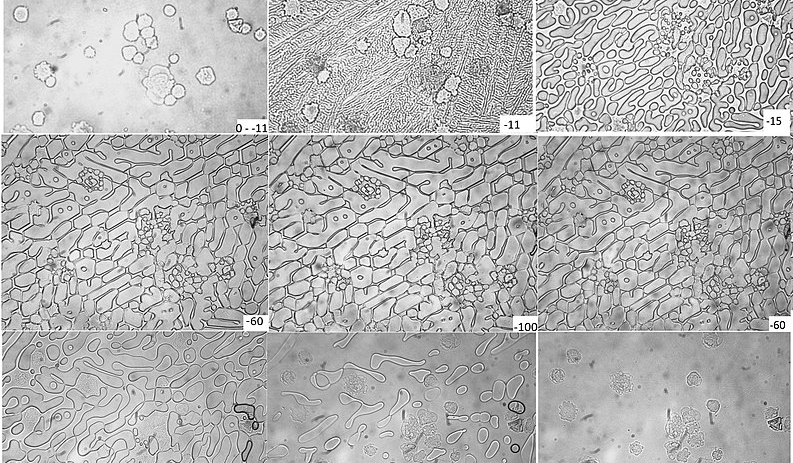CfP 4S/EASST Prague 2020

Making Futures by Freezing Life: Ambivalent Temporalities of Cryopreservation Practices
Panel at the joint 4S/EASST meeting in Prague, 18-21 August 2020
The preservation of biological matter at extremely low temperatures has gained increasing prominence in medicine, plant breeding, and wildlife conservation over the last decades. Stored at temperatures of down to -196°C, cells and tissues are frozen in time. Oocytes, stem cells, germplasm, and sperm endure while the world keeps on changing. However, cryobanks are not simply stockpile facilities or archives. Storing organic materials (or the possibility to do it) creates potentialities and contingencies. Frozen cells become vital deposits, valuable backups, options to be considered.
Contrary to the prevalent idea of freezing as stabilizing, fixing, and containing bio-objects, this panel seeks to explore the generative dimensions of cryopreservation as a way of modifying relations and turning biological matter into things-to-become (Holmberg et al. 2011; Vermeulen et al. 2012; Stephens et al. 2018). Putting organic materials ‘on ice’ shapes and redefines present socialities, politics, moral economies, and infrastructures. By the same token, it changes the ways in which futures are anticipated and enacted. Frozen matter alters existing and creates new temporalities.
We are looking for contributions that trace notions such as ‘anticipation,’ ‘suspension, ’ ‘spaces of as-if,’ ‘hope,’ or ‘expectation’ in the realm of cryopreservation. Participants are invited to ground these concepts in empirical insights into practices of cryo-banking and the materialities of frozen bio-objects.
Please submit your abstracts here: https://convention2.allacademic.com/one/ssss/prague20/
References
Hoeyer, Klaus. 2017. “Suspense. Reflections on the Crypolitcs of the Body.” In Cryopolitics. Frozen Life in a Melting World, edited by Emma Kowal and Joanna Radin, 207-14. Cambridge, MA: MIT Press.
Radin, Joanna. 2017. Life on Ice: A History of New Uses for Cold Blood. Chicago/London: University of Chicago Press.
Stephens, Neil, Nik Brown, and Conor Douglas. 2018. “Editors Introduction: Biobanks as Sites of Bio-Objectification.” Life Sciences, Society and Policy 14, no. 6 (2018): 1-5.
Vermeulen, Niki, Sakari Tamminen, and Andrew Webster. 2012. Bio-Objects: Life in the 21st Century. Farnham: Routledge
Waldby, Catherine. 2015. ‘Banking time’: egg freezing and the negotiation of future fertility, Culture, Health & Sexuality, 17:4, 470-482.

